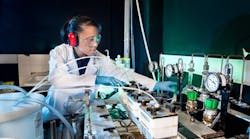Figure 1. Sandra Kentish of the Melbourne School of Engineering is developing chlorine-resistant desalination membranes. Source: Casamento Photography.
To prevent biological fouling, the saline waters generally undergo treatment with an oxidizing agent such as chlorine. However, chlorine degrades the polyamide membranes currently used, necessitating dechlorination before the stream goes to the membranes and then rechlorination afterward if the water is for potable use. “The new membranes perform at a comparable level to existing commercial membranes used in these applications, but importantly show greater resistance to attack by chlorine-containing chemicals,” says Kentish. “The chlorine-resistant membranes can cut out additional processing steps, reducing operating costs. They can also prevent the decrease in water flow that is currently observed with time due to biological fouling,” she adds.
The PEM membranes were made using a layer-by-layer assembly process that added crosslinked polyelectrolyte layers to a polysulfone support. Membranes with ten deposited layers provided up to 97% monovalent salt rejection, note the researchers. The layers can be put on by spray or dip coating at ambient temperature, enabling rapid fabrication, they add. More details appear in a recent article in the journal Advanced Materials.
“The advantage of our technique is that we can readily substitute the polyanion for any negatively charged polyelectrolyte. This gives us flexibility in the chemistry of the system, which will allow us the ability to further tailor permeability and selectivity,” notes Kentish.
“The key challenges are getting flux and rejection to equal that of the existing polyamide systems, with fewer total layers,” she says.
“The next steps are two-fold,” she explains. “Firstly, the membranes should be optimized for flux and rejection in the lab. This would also probably mean trying to reduce the number of layers, as at larger-scale manufacture, depositing this many layers will become operationally expensive. It may also involve adding a sealing layer on the top — this is commonly used in polyamide systems to improve rejection and reduce fouling. Secondly, longer-term trials at a larger scale need to be conducted to validate the stability of the membranes over months and years.”
“Layer-by-layer systems such as these are known to be quite robust in other applications. However, we would need to test these in a pilot-scale environment to confirm the robustness and how it compares to a polyamide system,” notes Kentish. Producing pilot-scale membranes isn’t an issue, she adds. “We would only need access to a facility to make a larger-scale module.”
“There also might be the potential to use the approach to develop chlorine-resistant coatings for applications other than membrane systems,” she says.
The researchers now are looking for groups willing to collaborate on and fund further development.

